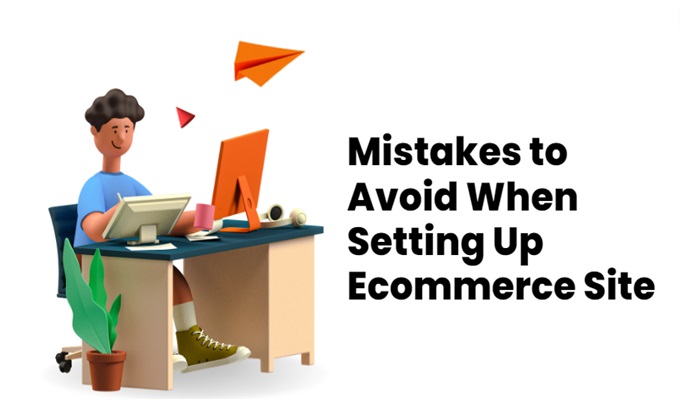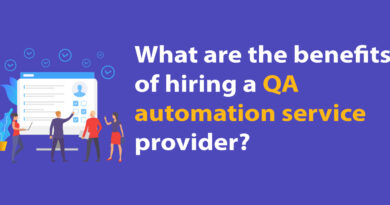Mistakes to Avoid When Setting Up Ecommerce Site
The amount of e-commerce stores on the Internet is growing at a constant rate. By the end of 2022, the e-commerce market is expected to reach a sales value of $5.4 trillion, making e-commerce one of the most profitable markets to enter. More and more people are switching to online shopping instead of visiting physical stores and malls. At the same time, building an ecommerce brand that manages to sell cheap is not a simple job at all and one of the decisive aspects of the success of stores is handling problems and avoiding mistakes in options in advance.
Setting up an e-commerce store is one of the popular ways to generate income online but building the brand and the store is a challenging task. There are many options for building the store – Shopify, WordPress, Wix and more. When building a store there is a learning curve for managing the store, the customers and the products, so it is impossible to avoid making mistakes, but it is important to reduce the number of mistakes and of course not to repeat them over and over again. Here are a number of mistakes that are important to avoid in eCommerce:
-
Ignore the importance of quality web hosting
Web hosting is an essential part of any website. Those who open a website need to store it on a server and therefore the choice of platform is significant because Shopify comes with their own website hosting, unlike WordPress where you will have to choose a top web design agency for the store. Website owners often fail to understand the differences between the different hosting companies, so it is important to choose a quality website hosting service in advance. It is recommended to choose web hosting in the cloud that allows you better security for the store and fast loading of the pages and the product pages.
-
Not to provide live support
On-site live chat is one of the best tools used by eCommerce stores and websites in general because it converts at a high percentage. Adding live chat to the website helps surfers get a very quick response and a quick response to a potential lead or customer almost guarantees you a conversion. You can add a WhatsApp button instead of a chat button, as long as there is someone connected to the WhatsApp account to respond. Not giving surfers a quick answer to questions on the site is a critical mistake that many stores make without realizing how many leads and purchases are missed every day.
-
Crowded and compressed look to the store
We often see crazy traffic on the homepage of ecommerce stores. Website owners want a lot of elements on their page and at the same time leave no spaces and separations, which makes the browsing experience difficult for surfers to see. Users will be confused by most of the elements on the site and will not concentrate on what is really important – buying products. Correct choice of template and correct layout of elements on the site will help you make the relevant information accessible to surfers, this way your site will be faster and much more pleasing to the eye.
-
Non-optimal product pages
Your product page is your only chance to get customers to purchase the product. You need to create an easy-to-understand product page with all the relevant details, photos, videos and any information that will help the customer better understand what he is purchasing and how the product is going to help him after the purchase. On product pages of digital products be sure to invest even more because there is no tangible product that can be presented to surfers. When building a product page on an ecommerce site, it is important to observe the following: convenient search filters so that it is easy for surfers to find what they are looking for and a photo gallery for the product from all angles.
-
Few payment options
The ultimate goal in an ecommerce store is to produce a conversion action in which the surfer pays online and purchases a product. When you build an ecommerce store, clearance must be your top priority. Most store owners do not make an effort to integrate several clearance solutions and actually lose customers. In order to have a functional online store, you must allow surfers several payment methods to significantly improve the conversion rate and not lose customers. Along with familiar payment options such as credit cards and PayPal, also combine advanced options such as Bit, Paybox, Bitcoin and more.
-
Inefficient checkout page
Many store owners lose customers at checkout because they did not optimize the purchase process in the store and did not optimize the cart and checkout pages. Already now you can check your cart or checkout abandonment rates and understand if you have a problem with the purchase process. Ecommerce stores lose hundreds of purchases a month when surfers regularly abandon at the end of the process, so it is important to improve the checkout page: add a discount code on the page, layout the page in an inviting and convenient way for the surfer and combine the checkout page and the cart so that the surfer has one less page in his customer journey.
-
Lack of investment in SEO
Another common mistake on ecommerce sites is a lack of attention to organic promotion. Although organic promotion in a store that contains thousands of products can be a complex task, because not many stores put emphasis on SEO, if you put emphasis on it, you will gain fast ratings and many customers without spending an advertising budget. Invest in an extensive product description and invested product pages and they will get a ranking on key phrases. In stores with a large amount of products, it is recommended to emphasize the promotion of the category (car gadgets, baby products, garden products, etc.) and the home page.
-
The surfers are not monitored and no conclusions are drawn
Monitoring the surfers in the e-commerce store is critical to further improving performance and improving conversion ratios. Without appropriate analytical means that measure all the relevant parameters, you lose the important insights that can be generated from the traffic that arrives at the store. With the help of analytical means, it is possible to say precisely how many conversions came from each marketing channel you used, and thus you can improve the marketing channels and optimize the campaigns. With the help of the Google Analytics tool, you can measure every action that takes place on your website, with an emphasis on the conversion actions that are critical for an ecommerce store, and with the Hotjar tool, you can view screen recordings of surfers, the actions they performed, how far they scrolled the page, and more. These tools give you insights into the behavior of users on the website, so if you identify a particular place with a problem, you can immediately correct and change it.
In conclusion
There are many mistakes in running an online store that you probably cannot avoid. In general, managing a store including orders, customers, suppliers, customer service, returns, etc., is a long way and mistakes are corrected on the fly. We went over the 8 most common central mistakes in the field of e-commerce, mistakes that almost every person who opens an online store tends to make. Ensuring high-quality web hosting, live support for surfers, a clean look for the store, well-kept product pages, several payment options, a converting checkout page, organic promotion for the store and drawing conclusions with analysis tools will make your work in the field of e-commerce much more professional.



